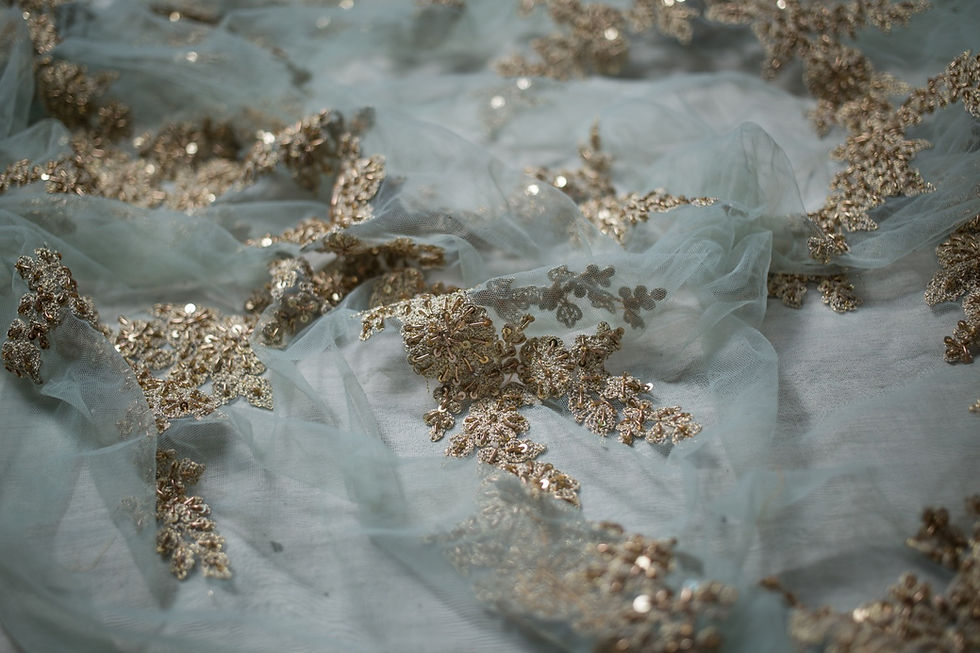Important Facts About Fabric Construction For Dressmaking
- Jasmine Terry-Ankobil
- Feb 3, 2021
- 2 min read
Updated: Dec 25, 2023

Ever made something, where you followed all the instructions and did everything seemingly "right"? but, things just came out all wrong?! Chances are it has something to do with your fabric, whether you use the wrong type for your project or you cut it out wrong causing the garment to "pull" in an awkward way.
Fabric Construction Basics


Grain lines
There are a few types of grain lines and fabric parts to understand.
Cross grain- Refers to the threads that proceed in a "side to side" direction and offer a bit of stretch.
Straight grain- Refers to the threads that proceed in a "up and down" direction and offers no stretch or "give"
Bias- is the 45 degree angle between the straight and cross grains. Fabric has the most stretch in the bias direction. Dresses that are cut on the bias, usually mean that they are cut in this way. They can often be very expensive considering the waste involved in only being able to use this section of the fabric.
Selvage- is a "self-finished" edge of a piece of fabric which keeps it from unraveling and fraying.
Types of Weaves
Fabrics are manufactured in a wide variety of designs. The different designs and effects produced on the fabric, (with the help from various machines) form different weaves which enhances the look of the garments. See the image below for some common weaves.

Types of Fibers
Fiber- a fiber is a filament of raw material, the smallest essential element of a garment.

It may be very long or as short as a few centimeters. Fibers are made into thread or yarn by spinning, and are subsequently woven or knitted into cloth. Here are some fiber types;
Natural- They are (as the name indicates) found in nature. The four basic natural fibers are silk, wool, cotton and linen. Others include cashmere, alpaca, vicuna, ramie, and hemp. All of which can be costly and difficult to use compared to basic fibers.
Manufactured- are created by processing natural cellulose, the same basic material as cotton and linen. Examples include rayon, acetate, and modal.
Synthetic- are created by forcing a liquid chemical through a small hole to produce a continuous strand or filament. Common synthetic are, nylon, polyester and acrylic.
See the video below for brief walk through of grain lines & weaves, be sure to subscribe to LAIDIECLOTH U, on YouTube for more fashion and dressmaking tutorials.
Thinking about doing more than just viewing fashion design from the sidelines? Are you ready to start off the new year with some new skills to transform your goals? Or perhaps you just want to enhance a few skills. Join LAIDIECLOTH U, on YouTube.
Fashion Design Template starting as low as $1.00
Jasmine Terry-Ankobil owner and operator of LAIDIECLOTH fashion house, where I create custom designs and perform alterations for formal occasions. Online Couture Sewing School LAIDIECLOTH U. Please feel free to share this article and/or visit my site www.laidiecloth.com




Comments